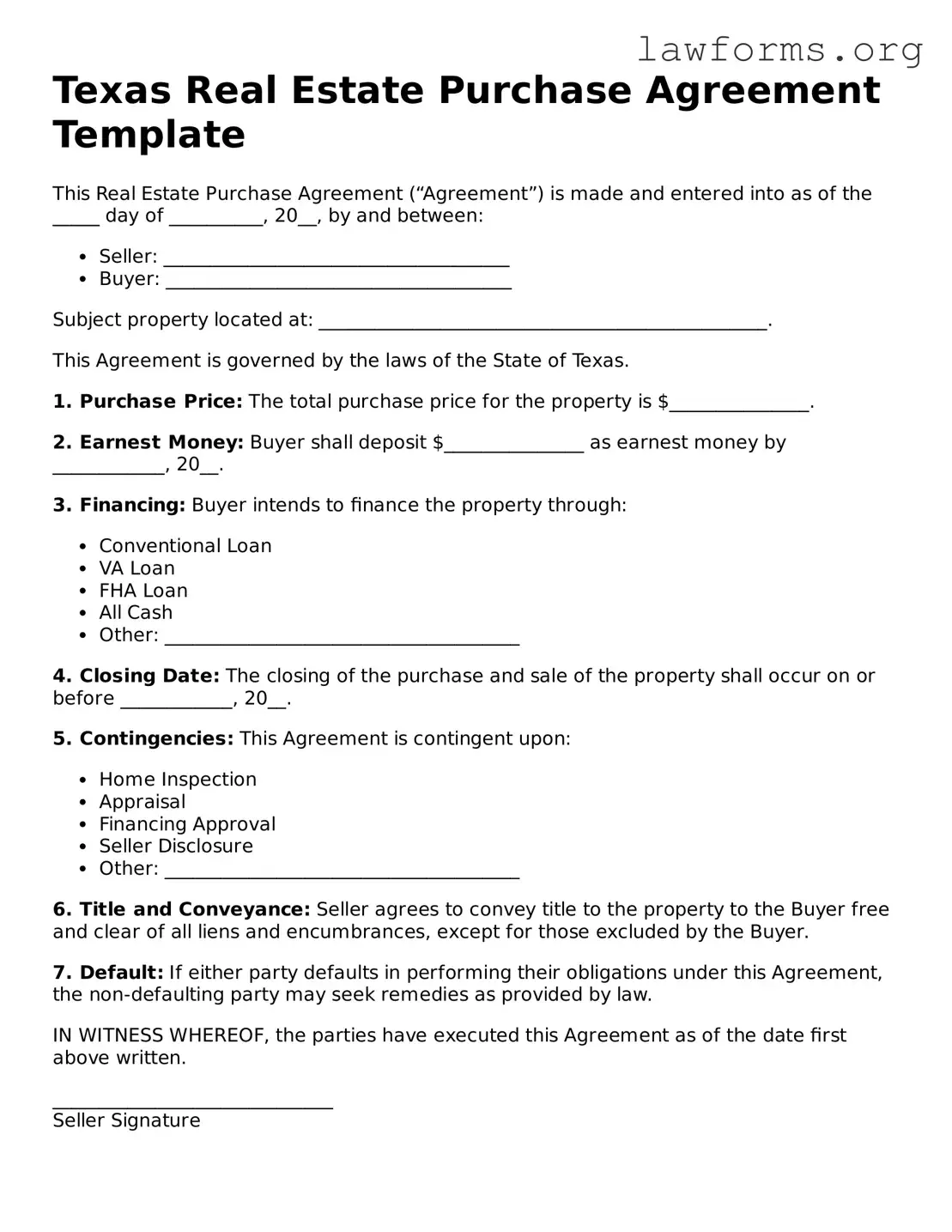Texas Real Estate Purchase Agreement Template
This Real Estate Purchase Agreement (“Agreement”) is made and entered into as of the _____ day of __________, 20__, by and between:
- Seller: _____________________________________
- Buyer: _____________________________________
Subject property located at: ________________________________________________.
This Agreement is governed by the laws of the State of Texas.
1. Purchase Price: The total purchase price for the property is $_______________.
2. Earnest Money: Buyer shall deposit $_______________ as earnest money by ____________, 20__.
3. Financing: Buyer intends to finance the property through:
- Conventional Loan
- VA Loan
- FHA Loan
- All Cash
- Other: ______________________________________
4. Closing Date: The closing of the purchase and sale of the property shall occur on or before ____________, 20__.
5. Contingencies: This Agreement is contingent upon:
- Home Inspection
- Appraisal
- Financing Approval
- Seller Disclosure
- Other: ______________________________________
6. Title and Conveyance: Seller agrees to convey title to the property to the Buyer free and clear of all liens and encumbrances, except for those excluded by the Buyer.
7. Default: If either party defaults in performing their obligations under this Agreement, the non-defaulting party may seek remedies as provided by law.
IN WITNESS WHEREOF, the parties have executed this Agreement as of the date first above written.
______________________________
Seller Signature
______________________________
Buyer Signature
______________________________
Witness Signature (if required)
